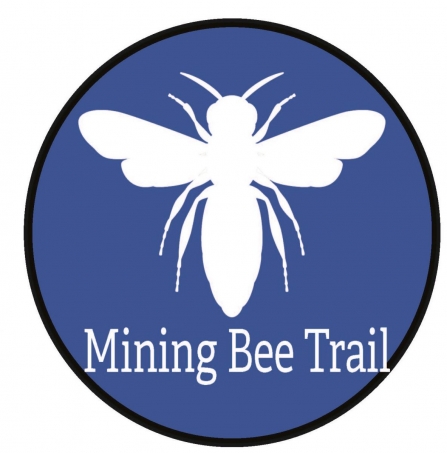
Welcome to the Mining Bee Trail
Meet the first of our miniature monsters of Highgate Common, the Black Mining Bee
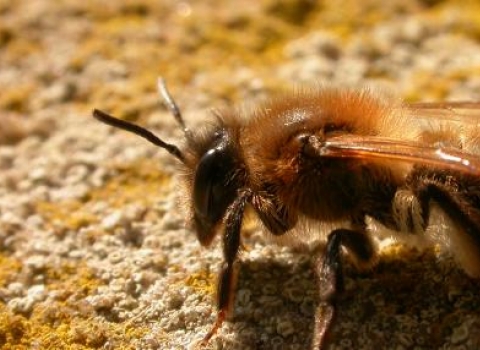
Board 1: The Black Mining Bee
These bees nest underground, often in paths, in the grass, or special areas we have made for them. Their burrows can be up to 60cm deep. The entrance to their burrows are marked with a small amount of soil. Find out more:
How to identify: Look out for their dark abdomen.
Did you know? Look around you, can you spot some of the 140 solitary bee and wasp that live on Highgate Common?
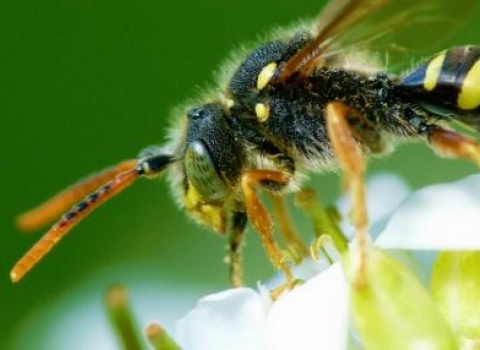
Board 2: The Cuckoo Bee
It may look cute, but the cuckoo bee is an egg-munching, larva-killing parasite of the nests of other bees! They sneak into the nests of other bees and lays its eggs. Once they are born they eat the other larvee inside! Find out more
How to identify: It has a a grey-white trail. These bees are tiny, only about 5mm in length!
Did you know? They do not construct their own nests
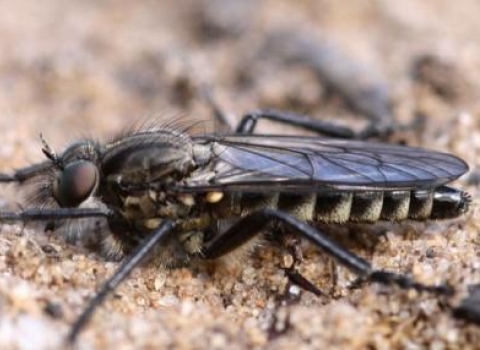
Board3: Spring Robber Fly
A scarce species of southern heathland, the fly attacks its prey by stabbing it with its short, strong proboscis injecting the victim with a venom which very rapidly paralyses the it before sucking out the liquefied material through the proboscis. It emerges in early spring well before other robberflies. Adults often bask on rocks and pebbles. The larvae develop as predators in the sand. Find out more
How to identify: Up to 10mm long with large compound eyes and a slim tapering abdomen.
Did you know? Robber flies are also called Assassin flies because of their predatory nature. This robberfly is very agile and powerful on the wing and will ambush and capture their prey in mid-air.
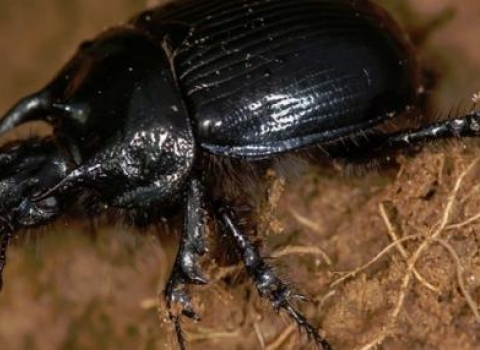
Board 4: Minotaur Beetle
The Minotaur Beetle is a large, round dung beetle found in sandy grassland and heathland, where it feeds on rabbit droppings and other dung, mainly at night. Adults emerge in autumn, but still need to mature in order to breed, so undergo an intense feeding period. If the weather is mild they may start breeding in early winter. They nest in deep tunnels where they lay their eggs and provide dung for the larvae to feed on; they drag the dung back to their nest using their strong front legs. Find out more
How to identify: The Minotaur Beetle is glossy black, with ridges running down the wing cases. Males are unmistakeable, sporting three 'horns' (two long and one short one in the centre) on their thorax.
Did you know? The males use their 'horns' to defend the nest.
